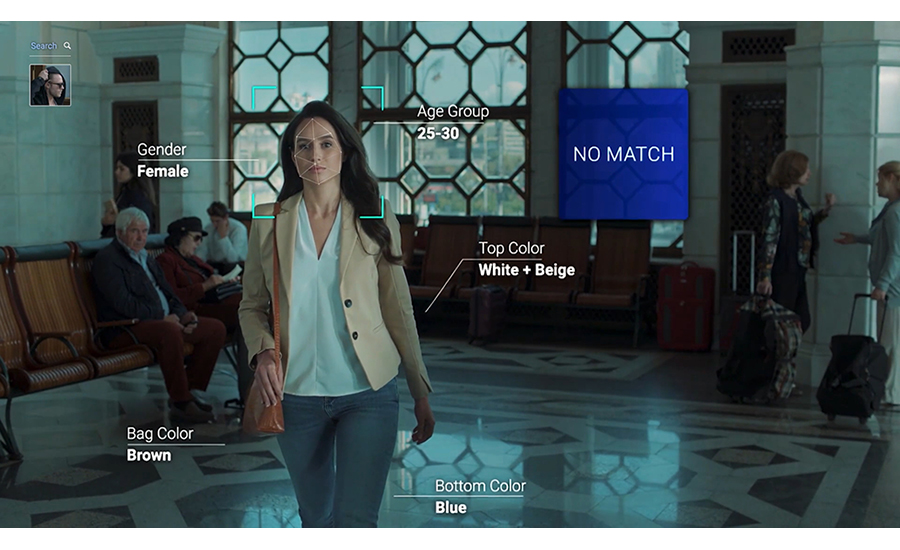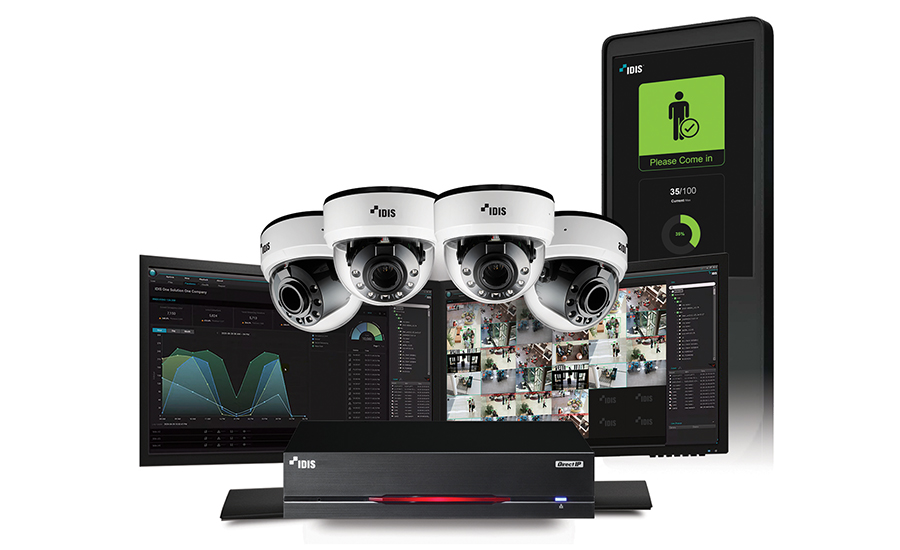Given all the marketing hubbub and hyperbolic declarations surrounding artificial intelligence, it can be a chore at times to appreciate the technology’s actual application successes and promising future.
With use cases that cut across the security ecosystem, AI is providing the ability to capture incoming data from edge devices and leverage that information to uncover newfound operational efficiencies, solidify standard operating procedures for security departments, and deliver greatly increased risk management awareness to organizations of all sizes.
Focusing on this developing technology arena can position security integrators to help end customers support not only their physical security needs but also core business initiatives for the long-term.
Proactive Security Outcomes
Throughout the history of legacy security applications, access control, video surveillance and intrusion systems have mostly supported a reactive approach in providing detection and response to threats and events. AI and its subfields, such as machine learning and deep learning, are fueling a paradigm shift where proactive security measures are now becoming commonplace across a range of vertical markets and applications.
AI-enabled functionality such as object, intrusion and loitering detection are mitigating threats before they escalate or materialize, explains Jason Burrows, sales director, IDIS America, Coppell, Texas. Surveillance monitoring without deep-learning analytics remains largely reactive, with operators and security managers addressing and investigating incidents after they have occurred.
“For instance, if an intruder were to enter a parking lot, force a door or breach a perimeter, operators would respond to alerts generated by motion detection, door contacts or sensors and then pull up the camera feeds to check if there is a genuine threat that needs an appropriate response,” Burrows describes. “However, by the time an incident is verified, and a security officer dispatched, losses or damages have often already occurred and law enforcement is contacted after the fact and provided exported video evidence of the crime.”
Conventional motion detection on cameras can be triggered by environmental factors such as moving foliage or small animals, while doors are often propped open by staff during hot weather or left ajar, and the more systems, the larger the number of alerts and number of data operators needed to manage.
Burrows says this has led to an increased need to reduce the number of false alarms, which at best are a nuisance and at worst, cause operators to become desensitized, which can result in critical incidents easily getting missed. “And, given the current labor shortages and wage inflation, many organizations don’t have the staffing levels to respond to every alert and alarm on their watch.”
The latest AI-enabled video monitoring tools are reducing the response burden on monitoring service providers, as well as security staff and eliminating the need to dispatch in-house personnel to perimeters or across campuses, Burrows explains.
For example, cannabis operators across California are using AI-enabled analytics that are providing a more proactive yet customized approach to preventing crime, mitigating risks and reducing their reporting burdens across cultivation, production, logistics and retail facilities.

AI assists security departments to identify persons of interest in real time with live facial recognition, enabling personnel to rapidly respond to threats while protecting the privacy of bystanders. // IMAGE COURTESY OF OOSTO
“Instead of monitoring multiple video streams, operators receive highly accurate, prioritized alerts to immediately begin assessing and verifying threats, with the ability for monitoring specialists to quickly and effectively intervene with live, personalized audio to notify intruders that they are being monitored and that law enforcement has been notified should they proceed any further,” Burrows adds.
Among the notable ways that AI is positively impacting physical security and helping enterprises become more proactive is tailgating prevention, says Dean Nicolls, chief marketing officer, Oosto, a New York City-based developer of facial recognition technology designed to classify objects and identify targets.
“Tailgating is one of the simplest forms of a social engineering attack and enables unauthorized people to elude traditional access control measures. It is an easy way for an unauthorized party to get around mechanisms — such as card keys — which are often assumed to be secure,” Nicolls says.
Thanks to AI, modern enterprises can help prevent tailgating or at the very least alert security personnel once a tailgater has entered the premises, he continues. There are new face-based access control readers that will only open the door/turnstile for one person pictured in the reader.
“AI-infused video surveillance can be used, after the fact, to identify anyone in an area who is not authorized to be there, signaling an instant alert. This enables security teams to identify unauthorized people before they become a security threat,” Nicolls says.
Quang Trinh, manager, professional services, Axis Communications, Chelmsford, Mass., sees AI impacting security from cloud and on-premise, to edge devices. Breakthroughs in deep learning techniques for analyzing images and video are allowing the industry to transition from motion detection to object and attribute detection, he explains.
“Context and site-level intelligence are enabling more human and object-based interaction tracking. A good example is in the physical access control [PAC] world, where AI is detecting tailgating at a higher level than previous solutions,” Trinh says. “Essentially, the ability to track a person of interest while they traverse a site is much quicker with the use of AI along with metadata tagging of objects and persons of interest.”
When it comes to the evolution of AI, it’s important to support the complete ecosystem of AI solutions, Trinh continues,. “For instance, Axis has partnered with Microsoft Azure to connect their cognitive services with our edge devices. The collaboration is leveraging the benefits of cloud and edge.”
Florian Matusek, director, video analytics, for Montreal-based Genetec, says just like machine learning changed the way we use our phones, home appliances and other technology in our day-to-day lives, AI has the potential to fundamentally change the way physical security is performed.
“Rather than representing a new feature, machine learning will embed into many core features of physical security systems to automate tasks, simplify operations, provide statistical insights, and even predict potential system failures,” Matusek says.
Josh Akre, a performance engineering manager for Milpitas, Calif.-based systems integrator Northland Controls, also emphasizes the application of AI to get out in front of potential system troubles.
“On the infrastructure side [in comparison to an organization’s operations functions] is where we see a lot of the proactive items. This is coming from the IoT and the cyber side where they’ve been monitoring their systems with elements of AI for several years now,” Akre says. “And we’re seeing that start to reach our physical security systems, where these AI-based systems will tell us when they think a camera’s going down, or if the operating patterns are a little bit abnormal.”
By example, Akre describes a scenario when all of a sudden a security camera CPU starts spiking on a fairly regular basis, indicating it is likely soon to cease operating altogether. The end customer may need to look at replacing it before it ultimately breaks. That is one way that AI systems can prove to be proactive, he says.
“But also, AI can help out the infrastructure side to be reactive,” Akre says. “Because if you do have a device or a server that goes down that AI-based system is going to store a lot of metadata — like CPU, RAM usage, data storage, stuff like that, to where an engineer or a sys admin can go in and get historical context as to what was going on with the device, so essentially they’re not starting blind in the troubleshooting process. They’re starting one or two levels up. They are not going into a brand new issue. Rather, they know the issue and are getting a ton of information before they really start the troubleshooting process.”
Evolving Value Proposition
A clear indication of a progressing security ecosystem is the way in which advancing technologies such as AI and machine learning are vitally shifting the core value proposition of physical and electronic security.
Historically, physical security was all about responding to alerts after a threat had occurred, Nicolls explains. The processes used leveraged outdated technology, such as card keys and legacy analog cameras, or relied on manual processes, including security guards on the lookout for bad actors or suspicious activity.
“With AI and machine learning, organizations can spot bad actors or watch-listed individuals in real time using their existing cameras, thanks to state-of-the-art facial recognition software,” Nicolls continues. “Security teams can even spot these individuals when the person of interest is in a crowd, not looking at the camera, or when the camera is positioned high on a wall or in a ceiling.”
The other area where AI and ML is playing a role is in the alerting process, Nicolls says. Traditional video surveillance is plagued by inaccuracy and false positives, where innocent individuals are identified as someone on the watch list.

Increasingly, retailers of all sizes are using analytics-driven metrics of activity in-store to increase sales and build customer loyalty. The IDIS AI Retail Box is one example of how AI-enabled technology is providing actionable intelligence, including queue monitoring, heat mapping, occupancy monitoring, and real-time activity data from specified locations. // IMAGE COURTESY OF IDIS
“Neural networks are becoming increasingly robust and accurate, which negates the need to have security personnel watch video screens. They can now just wait for the system to send them highly accurate alerts with a negligible number of false positives,” Nicolls adds.
AI and ML are enabling uniformity and improving organizations’ security posture across their estates, Burrows says. Today, there is a much greater need for security directors to demonstrate the value of their departments and prevent security technology and officers from being viewed as grudge purchases.
“Video management software with federated architectures and deep-learning analytics give them complete oversight across dispersed and worldwide facilities,” Burrows says. “Accurate data and reporting help them ensure security personnel are consistently meeting key performance indicators, such as response times to potential threats before they become full-blown acts of theft, violence, or health and safety incidents to reduce losses, and insurance payouts and premiums, while mitigating the potential of the reputational damage that can be caused by high-profile breaches or accidents.”
In other cases, he adds, increased intelligence means they can decrease staffing levels to reduce costs. Larger enterprises are also looking to improve staff user experiences and ensure well-being.
Samuel Joseph, co-founder and CEO of San Francisco-based Hakimo, also stresses AI is fundamentally changing the value proposition of physical security from an evidence collection mechanism to something that actively prevents incidents. A key aspect of AI is the ability to help understand patterns. Once security departments understand patterns in data, he says, they are then able to know what anomalies exist.
Joseph, whose company offers an AI-enabled smart monitoring platform for physical security systems in large enterprises, illustrates this point with a fictional scenario. Consider an employee who regularly badges into a facility weekdays between 9 a.m. and noon on specific doors. Randomly, the individual badges into a server room on a Saturday at 2 a.m. AI and analytics will flag this entry as an anomalous incident.
“Without AI, without automation, it’s hard to find out these things because you need somebody to manually go through every single event,” Joseph says. “AI automates even monitoring and finds out these insider threats and so on — again, proactively finding out anomalies before they happen.”
Trinh further elaborates on the benefit of automation. Consider that the traditional security operator views a myriad of screens with several video feeds while at the same time managing a PAC system and/or a building intrusion system. It is a lot for one person to focus on and expect them to proactively protect a site, he describes.
“With AI, and techniques in deep and machine learning, many operators benefit from a drastic reduction in false alerts and nuisance alarms that can consume their time,” he says. “In video, the transition to object classifications of people and vehicles has reduced motion-based alerts triggered by shadows, lighting and vegetation.”
Trinh adds the pandemic served to underscore the value that data — provided by video and AI — provides an organization. “Whether determining the number of people in the office, understanding traffic flow statistics or automating audible warnings through speakers, many organizations found — and are still discovering — value in the efficiencies that a physical surveillance system can provide,” he says.
Post-Pandemic Accelerated Adoption
With marketing departments at manufacturing and integration companies running on high, the COVID-19 pandemic created an ideal moment to promote infection mitigation and business recovery efforts made possible by a variety of AI-enabled solutions. While exaggeration and outright falsehoods were not uncommon, the pandemic can be credited for helping advance lasting awareness and application for the technology.
“This is definitely a long-term trend because of the change in mindset that the pandemic triggered,” says Nicolls of Oosto. “Let’s take touchless access control as an example. Organizations had started to slowly move away from less secure access control systems, such as key pads, but COVID-19 accelerated this trend.”
Biometric access control, in particular, can also provide a touchless and friction-free — and germ-free — experience for employees nervous about contracting COVID from frequently-touched surfaces, he continues.
“Instead of fumbling for a phone or a keycard, employees simply need to look at a camera or screen to instantly gain building access,” Nicolls says. “With other methods, employees are asked to remove their gloves, find an app on their phone, or find their plastic keycard which can cause delays and create long queues. With face-based access control, employees simply need to look at a camera or screen to gain immediate entry.”
Tad Druart, vice president, marketing, Alcatraz AI, Redwood City, Calif., sees lasting impact, particularly in areas that allow for activities to become touchless. Druart explains the company is seeing growing demand for its autonomous access control platform. “It’s not just the touchless access enabled by facial authentication, it’s the ability to have employees securely and privately enroll without intervention and close physical interaction with individuals from security or HR,” he says.
Another factor that Druart cites in the accelerating adoption of AI is the changes in workforce behavior coming out of the pandemic. Even in places that are requiring people to return to work, they are more flexible with work schedules.
“To keep employees comfortable and limit interaction the hybrid work environment means people are coming in on different days and during different times of the day,” he says. “Authentication of people accessing the environment and confirmation of the people requires AI to eliminate human error and interaction.”
The pandemic served as a catalyst in helping people and organizations realize the value of AI and its associated use cases sooner, says Joseph of Hakimo. One example he references is remote work. “Remote work would have still happened without COVID, but it would have taken 10 or 15 more years,” he suggests. “The adoption of AI was going to happen anyway and COVID accelerated that timeline.”
Another sector in particular where the adoption rate of AI can be expected to advance for years to come is manned guarding, Joseph says. Severe staffing shortages are further enabling AI across a range of verticals. “If you cannot find guards, the only way out is to use technology and AI, and do remote guarding or something like that,” he says.
Trinh also emphasizes the pandemic accelerated what many organizations where already investigating. Many were, and currently are, transitioning to a data-driven decision-making process. Two obvious examples are finance and marketing where AI and machine learning are used to predict trends and forecast sales targets, he explains. The pandemic highlighted the value of video data and visual verification provided by AI-based solutions.
“The digital revolution of sensors toward IP have expanded the capabilities of video and access control,” Trinh says. “Many building sensors and facility-related systems are now digital and running on a network. The fusion of all the data from these sensors will drive the demand for AI-based solutions in machine and deep learning to aggregate all these data points into actionable insights for the customer to leverage. The outcome serves safety and security and also operational efficiencies that directly impact the customer.”
Akre of Northland Controls believes the pandemic provided AI-based companies “a little bit more breathing room to refine their systems and to really push marketing.”
He continues, “There’s been a ton of discussions about AI during the pandemic, and I think those discussions are helping consumers really identify certain systems or identify certain use cases for AI that they could potentially implement.”
It may not necessarily be the technology deployed during the height of COVID-19 that is now driving overall adoption, but instead Akre believes it was all of the conversations around AI and the refinement of the technology.
“Once we started getting out and once we started implementing technology and customers wanted to see the latest and greatest thing, we were prepared to show them a few different AI companies and say, ‘Hey, this is how it could benefit your system,’” Akre explains. “We spent the last year and a half reading a ton of material about all of these different products, and now we’re at the cusp of it and we can start deploying.”




